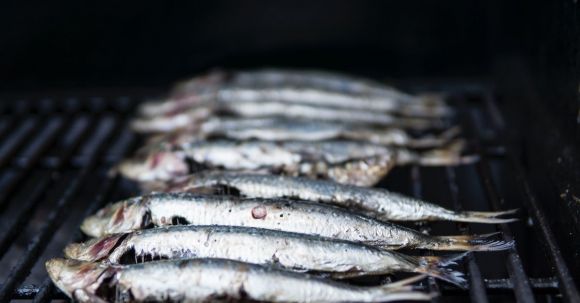When it comes to cooking, there are several techniques that can be used to prepare delicious and nutritious meals. Two popular methods are grilling and frying. Both techniques have their own unique benefits and drawbacks, and understanding these can help you make healthier choices in the kitchen. In this article, we will compare grilling and frying, exploring their impact on the nutritional value of the food and their overall health benefits.
Grilling: A Searing Goodness
Grilling, also known as barbecuing, involves cooking food over an open flame or on a hot grill. This method is a favorite for many because it adds a smoky and charred flavor to the food. Grilling is a healthier option compared to frying for several reasons.
1. Less Fat: When grilling, excess fat from the food drips off, resulting in a lower fat content. This is particularly beneficial for those watching their waistlines or trying to maintain a healthy weight.
2. Retained Nutrients: Grilling helps retain the natural nutrients in the food. Unlike frying, which may lead to nutrient loss due to high heat and oil absorption, grilling preserves the essential vitamins and minerals.
3. Versatility: Grilling is not limited to meat. You can grill a variety of vegetables, fruits, and even tofu. This versatility allows for a wider range of healthy options.
Frying: A Crispy Temptation
Frying involves cooking food in hot oil or fat. While it may result in a crispy and golden texture, frying has some drawbacks that should be considered before indulging in this cooking method.
1. Increased Fat Content: Frying requires oil or fat, which adds an extra layer of calories. The food absorbs the oil, resulting in a higher fat content compared to grilling.
2. Nutrient Loss: High heat and prolonged frying can lead to nutrient loss. The vitamins and minerals present in the food may be destroyed or diminished, reducing the overall nutritional value.
3. Formation of Harmful Compounds: Frying at high temperatures can lead to the formation of harmful compounds, such as acrylamide, which is linked to an increased risk of cancer. These compounds are not present when grilling, making it a safer option.
Making Healthier Choices
While both grilling and frying have their own benefits and drawbacks, it is important to make informed decisions in the kitchen to promote a healthier lifestyle. Here are some tips to help you make healthier choices when it comes to cooking techniques:
1. Opt for Lean Cuts: When grilling, choose lean cuts of meat to minimize the fat content. This will ensure you get the full benefits of grilling without the unnecessary calories.
2. Use Healthy Oils: If you choose to fry, opt for healthier oils such as olive oil or avocado oil. These oils have a higher smoke point and contain healthier fats.
3. Control Portion Sizes: Regardless of the cooking technique, portion control is key. Be mindful of your serving sizes to avoid overeating.
4. Combine Cooking Techniques: Consider combining grilling and frying techniques. For example, you can grill your meat and then finish it off in the oven to achieve a crispy texture without excessive oil.
Conclusion: Making Informed Choices
In the battle between grilling and frying, grilling emerges as the healthier choice due to its lower fat content, retained nutrients, and versatility. However, it is important to remember that moderation is key. By making informed choices and incorporating a variety of cooking techniques, you can enjoy delicious and nutritious meals while maintaining a healthy lifestyle.





